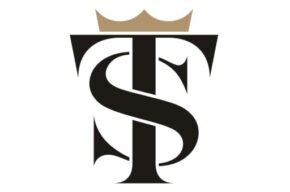US 30-Year Fixed-Rate Mortgage Rate Hovers Just Under 7%
The 30-year fixed-rate mortgage, a cornerstone of the American housing market, is continuing to capture attention as it hovers just below the 7% mark. This notable rate level reflects ongoing shifts in the economic landscape, including Federal Reserve policy, inflation trends, and broader market dynamics.
The Current Rate Landscape
As of the latest report, the average rate for a 30-year fixed mortgage stands at approximately 6.9%, a level that has persisted for several weeks. While slightly lower than the recent peaks seen in 2023, the rate remains significantly higher than pre-pandemic levels, when rates were below 4%.
Mortgage rates have surged over the past two years due to the Federal Reserve’s aggressive interest rate hikes aimed at curbing inflation. These rate increases have had a cascading effect on the housing market, making it more expensive for buyers to finance home purchases. Higher rates have also dissuaded many homeowners from selling, given that they would need to give up their current lower-rate mortgages.
Impact on Homebuyers
The nearly 7% mortgage rate translates to increased monthly payments for borrowers. For instance, on a $400,000 loan, the difference between a 3% and 7% interest rate can add hundreds of dollars to a monthly payment. This financial strain has prompted many potential buyers to delay homeownership or opt for smaller homes in less competitive markets.
Moreover, the higher rates have led to a decline in housing affordability. According to recent data, housing affordability is near a multi-decade low, with the median-income household now needing to spend a record percentage of their earnings on mortgage payments.
Sellers Stay Put
For homeowners with existing mortgages secured at historically low rates, the prospect of selling has become less attractive. Many are choosing to stay put, leading to a reduction in housing inventory. This shortage has intensified competition in the market, with some areas seeing bidding wars despite the overall slowdown in activity.
Broader Economic Implications
The elevated mortgage rates are not just a housing market issue; they’re a reflection of broader economic trends. The Federal Reserve’s efforts to tame inflation have influenced borrowing costs across the board, from personal loans to business financing. While inflation has moderated in recent months, the Fed has signaled that rates could remain elevated for some time, keeping mortgage rates under pressure.
What Lies Ahead
Looking forward, analysts remain divided on where mortgage rates are headed. Some anticipate that rates could inch higher if the Federal Reserve continues its tight monetary policy. Others predict a gradual decline if inflation continues to cool and economic growth slows.
For potential buyers, the current rate environment underscores the importance of careful financial planning. Shopping around for the best mortgage deals, improving credit scores, and considering adjustable-rate mortgages are some strategies to mitigate the impact of higher rates.
Conclusion
The 30-year fixed-rate mortgage hovering just under 7% is a pivotal development for the housing market and the broader economy. While it poses challenges for both buyers and sellers, it also reflects the intricate balance of economic forces at play. As rates remain in focus, all eyes will be on the Federal Reserve and its next moves, which could either ease or exacerbate the financial pressures faced by millions of Americans.


